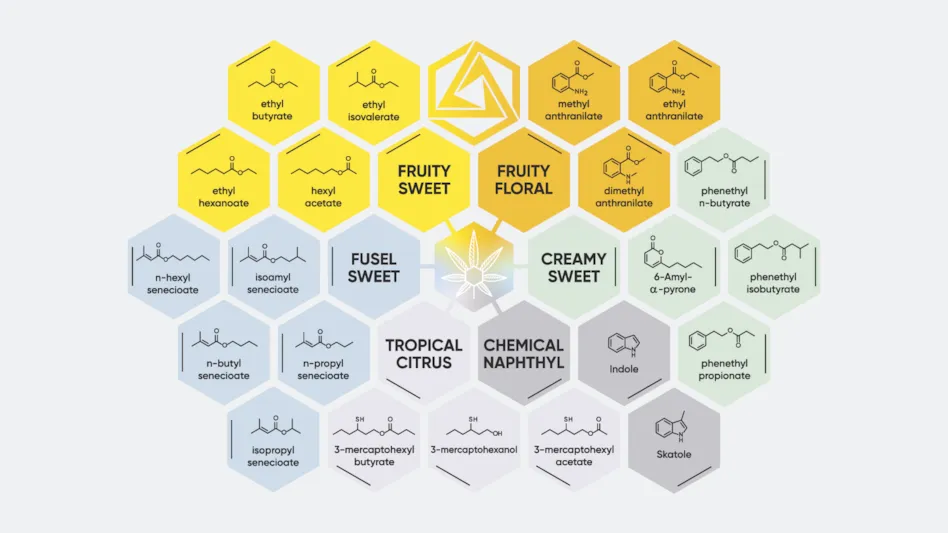mpounds previously undiscovered in cannabis seem to drive distinct odors and flavors, while others intensify them, and this finding could have implications for breeding, product development and more.

This schematic highlights key volatile compounds that produce specific aromas in cannabis, according to new research.
Courtesy of Abstrax Tech
MICHELLE SIMAKIS | DECEMBER 13, 2023
Many attribute the pungent, skunky fuel aroma of a Sour Diesel or the citrus scent of a Lemon Haze to terpenes, long considered to be the primary driver of the powerful fragrances of cannabis.
But new research is reshaping this long-standing belief, which could have implications for everything from breeding to product development to labeling.
According to a paper published in October in ACS Omega, a peer-reviewed journal of the American Chemical Society, researchers have uncovered a class of compounds previously unknown in cannabis. Iain Oswald, Ph.D., one of the lead researchers of the study, tells Cannabis Business Times that the team used both sensory analysis – i.e., asking people to smell samples from modern to classic cultivars like Starburst 36, Gelato, OG Kush and GMO, and describe and rate their sweetness or savoriness on a questionnaire – and two-dimensional gas chromatography to analyze ice hash rosin samples. Researchers used ice hash rosin specifically to more easily detect cannabis compounds that are present but in lower concentrations, Oswald says.
“We had a really wide diversity of aromas going on here, which when we looked at the chemistry, after analyzing these on our instrumentation, what immediately became obvious is that varieties with completely different smells had very similar terpene profiles,” Oswald says, adding that, likewise, there were other varieties with very different terpene profiles but similar fragrances. “If terpenes truly are the differentiators in the aroma of cannabis, there should have been much greater differences in the terpene profiles, but we did not see that at all.
“The most highly rated sweet sample, which was Grape Pie x Do-Si-Do, and the least sweet, most savory, which was GMO, those two smelt completely different yet their terpene profiles were very similar. …There’s obviously something else going on.” Source
